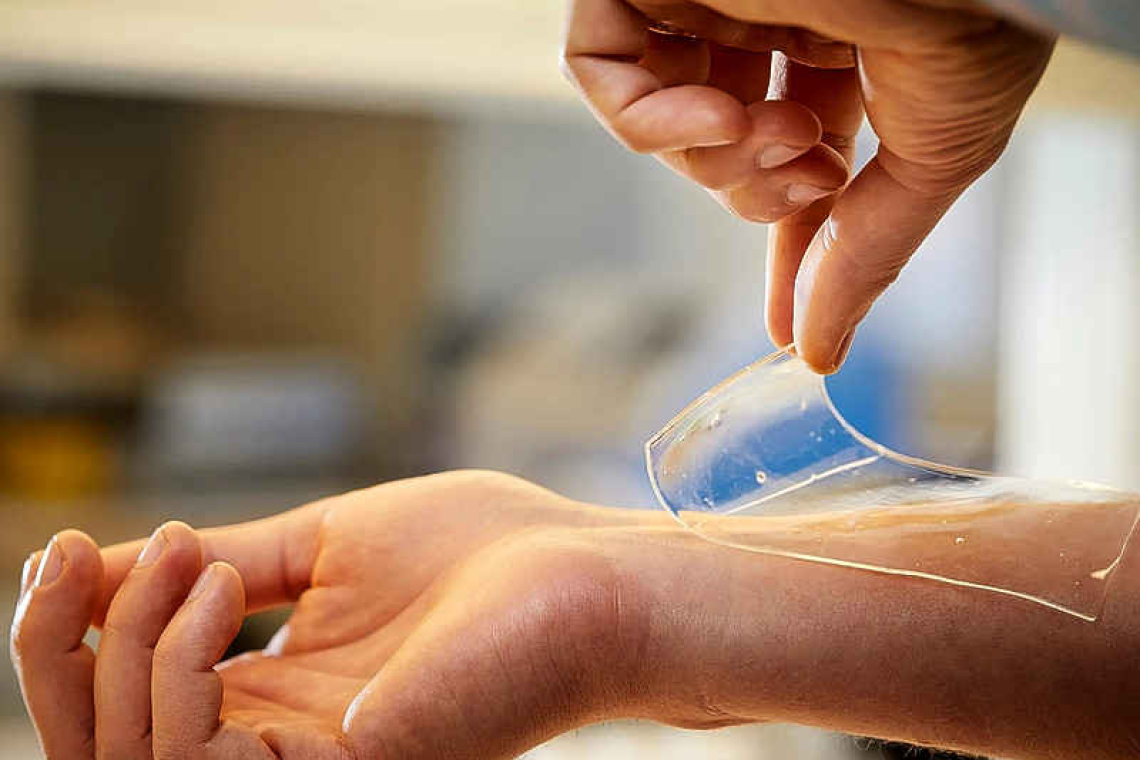By Dr. Colin Michie – University of Central Lancashire.
Helping damaged skin can require interventions. Novel dressings, some containing herbs, are pushing gauze bandages into a back seat.
Most skin wounds mend on their own – thank goodness! Healing starts with a blood clot, followed by an expansion of pinkish, spongy connective tissues that steadily and magically regenerates. Fluid may ooze from this granulation tissue. It becomes stronger, connective tissue cells remodel; skin grows into the wound from its edges. During the early stages, there may be inflammation, swelling and pain, as the immune system fights off invading bacteria and encourages rebuilding. New tissues produce growth factors and develop small electrical currents to guide these processes.
Large or deep wounds may be slow to heal: they can easily fester. Bacteria and sometimes fungi often form coatings or biofilms inside a wound slowing recovery. This is difficult to remove – antibiotic resistant organisms in these may become invasive too. Any wound can be a potential cause of tetanus: Is a vaccine required? Tissues in a wound might die from a shortage of sufficient blood supply. Wounds that do not heal are more frequent globally because of one condition – type 2 diabetes. Diabetes damages the circulation, nerves and immune responses. A large proportion of sufferers may develop pressure or leg ulcer wounds. Complications relating just to diabetic feet lead to over a half of non-traumatic amputations. This has delivered a powerful drive to improve wound care.
Disinfection is valuable, but may be damaging to open wounds. It might include local iodine, chlorhexidine, alcohol, peroxygens or silver compounds. Antibiotics too may be required to stop biofilms. Early monk-surgeons observed that wounds infected with maggots had better outcomes, because fly larvae remove only dead tissue, limiting infection. Maggots are now available as germ-free dressings. And, of course, surgery – debridement – remains central to cleaning a wound. Suction devices have been designed recently for some wounds or burns. By drawing off fluid from large areas of damage, they can accelerate tissue growth. Supplying pure oxygen to a wound can have similar beneficial effects. Ideally, a moist wound will grow a cellular scaffold or sponge, allowing new blood vessels and cells to migrate in for reconstruction.
After gentle cleaning, wounds with a good blood supply can be treated with a poultice or dressing. Domestic recipe books, traditional healers, apothecaries, sorcerers and the internet have a diversity of these. Warm dressings based on porridge, mustard or prickly pear are used; more greasy or mucilaginous ones using wool, agave, waxes or gums keep the skin moist, while allowing air to reach the healing tissues. Poultices and plasters typically contain added herbs such as coconut oil, lemon grass, onions, or sassafras. Some were highly specialised, such as the arrowroot used by Arawaks to “draw” a poison arrow wound. The amazing variety of medicinal materials used over the centuries illustrates our close engagement with the world around us, with nature’s goods and services.
Hydrogels have revolutionised these strategies! Emulsifying or thickening agents known from our pantry, or cosmetics, have been woven and knitted to make hydrogels. These make excellent dressings, mostly biodegradable. They include gelatine, (originally made from bones and hooves), agar and alginates (from seaweeds). There are also milk peptides, moth silk proteins, curdlan from bacteria or chitosan from shrimp shells. Chitosan on its own can have beneficial impacts on healing. Hydrogels can be combined so as to deliver novel benefits. Ingenious fabrics of jelly-like mats, webs or layers of gels have been constructed with electrospinning or three-dimensional printers. For instance, silk peptides printed with gelatine, then exposed to ultraviolet light, can become an ideal wound dressing for a diabetic wound that will not otherwise heal.
Hydrogels have been designed to release herbal substances such as ginger or thyme into a wound to promote healing. Hormones, including thyroxine or growth hormone, have been added to encourage the development of new blood vessels. Antibiotics and anti-inflammatories have been tested too along with dressings that support those tiny, beneficial electrical currents. Novel research involving the use of small particles collected from platelets in blood, or stem cells, has shown these “exosome” components provide powerful restoration to damaged bone and cartilage, as well as skin tissues, in a hydrogel dressing. Exosomes promote the development of those crucial blood supplies too. Early surgical grafting methods, applying donor skin or collagen, have added to the successes of these advances in tissue engineering.
Twists and turns of technological progress have revived the ancient arts of wound care. Linseed and charcoal poultices have been upgraded in the interests of better healing and preventing amputation. The next generation of ingredients, though, would still belong happily in some medieval book of spells.
Useful resources:
https://www.nhs.uk/conditions/cuts-and-grazes/
Dr. Colin Michie is currently the Associate Dean for Research and Knowledge Exchange at the School of Medicine in the University of Central Lancashire. He specializes in paediatrics, nutrition, and immunology. Michie has worked in the UK, southern Africa and Gaza as a paediatrician and educator and was the associate Academic Dean for the American University of the Caribbean Medical School in Sint Maarten a few years ago.







